When I got to the Netherlands I had to learn many important new skills: speaking Dutch, biking through rush-hour traffic in pouring rain, making my own tortillas. What I did not need to learn was how to drive. Like any native Texan, I’ve been doing that since I was 16, and anyway owning a car in Amsterdam is an active inconvenience. Still, we rent or borrow cars now and then for errands and day trips; and so I needed to exchange my US license for a Dutch rijbewijs.
Sadly this was not a simple swap at the government office. I had to go through the entire process, starting with passing the driving theory exam. Thus did I make the acquaintance of the CBR—Centraal Bureau Rijvaardigheidsbewijzen1, or Central Driver’s License Bureau—which held the keys, pun intended, to my driving privileges. I’d heard that the process for getting a license was onerous, but they offer the test in English, and I’ve got 27 years of driving experience. How bad could it possibly be?
I paid quite a few euros for a subscription at theorie-leren.nl which included a paperback copy of the (deep breath) B Driving Licence Traffic Regulations Theory Book, as well as online access to hundreds of practice questions. Just to see what I was in for, I cracked open a practice exam, and…
Oh boy.
Some of the questions were obscure. Others were wildly unfair or arbitrary. As if that weren’t enough—and my friends, it is enough—most of the content, online and off, was very very poorly translated (Google Translate would have certainly done a better job).

I struggled with which practice questions to share here as examples, since there are literally dozens that defy all human intuition. Some of them are so baffling they feel Kafkaesque.

The good news, if such a thing exists, is that sometimes the stupidity of the exam works in your favor.
The worst section of the exam—the proof that the CBR hates you and wants you to suffer—is Hazard Perception. Here you’re shown a photo of a driving situation and have eight seconds (why eight?) to decide whether you should (a) brake, (b) release the accelerator, or (c) do “nothing” (keep your current speed). Already you might be thinking: “But two of the three options involve slowing down the car, so it’s got to be wildly subjective and almost impossible to get right.” YUP!
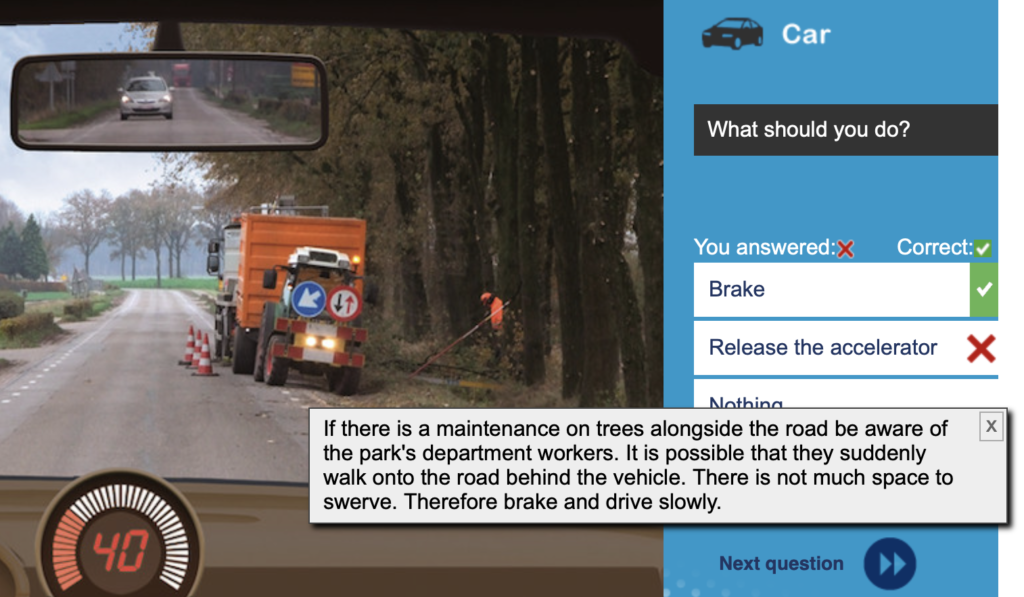
Again, I could give a dozen such examples. When it told me “Braking is wrong, but releasing the accelerator is right” for the 28th time, I experienced genuine, seething road rage from the comfort of my living room couch.
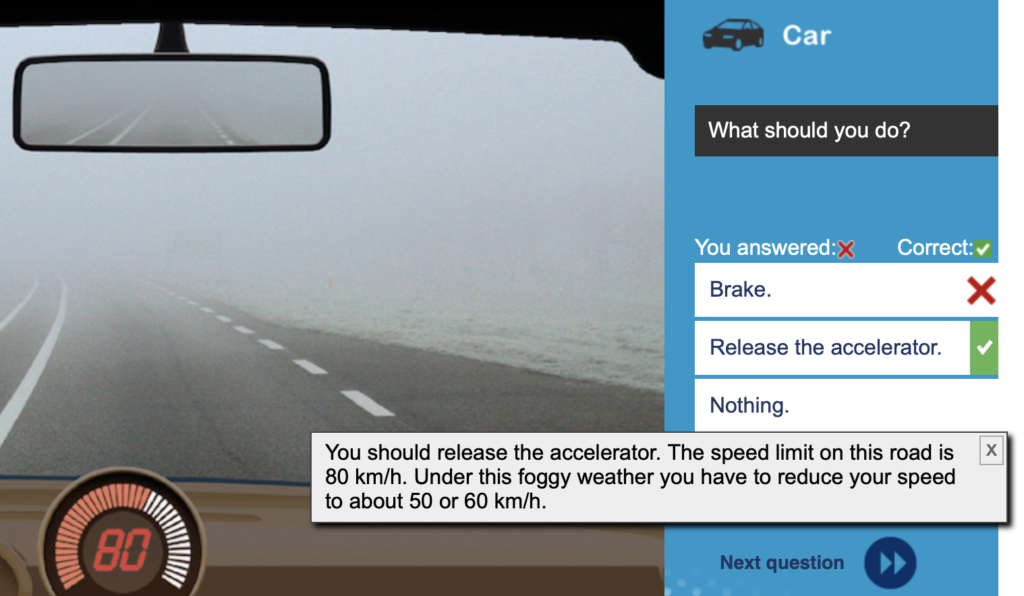
As a tacit admission that this portion is *especially* bullshit, the official CBR exam only required that I get 13 of 25 questions correct—50%—for a passing grade.
The only strategy for passing this exam, it seems, is by brute force: taking the practice exams so many times that I wedged the “right” answers into the folds of my brain, hoping they’d remain when I took the real thing. So that’s what I did night after night, sacrificing my cheery disposition, keeping crazy-person notes to help myself memorize.
All of this meant that, even as I learned the material, I went maddeningly long without actually passing a practice exam. I was getting fewer questions wrong as I went, but my testing board suggested I was an absolute moron.
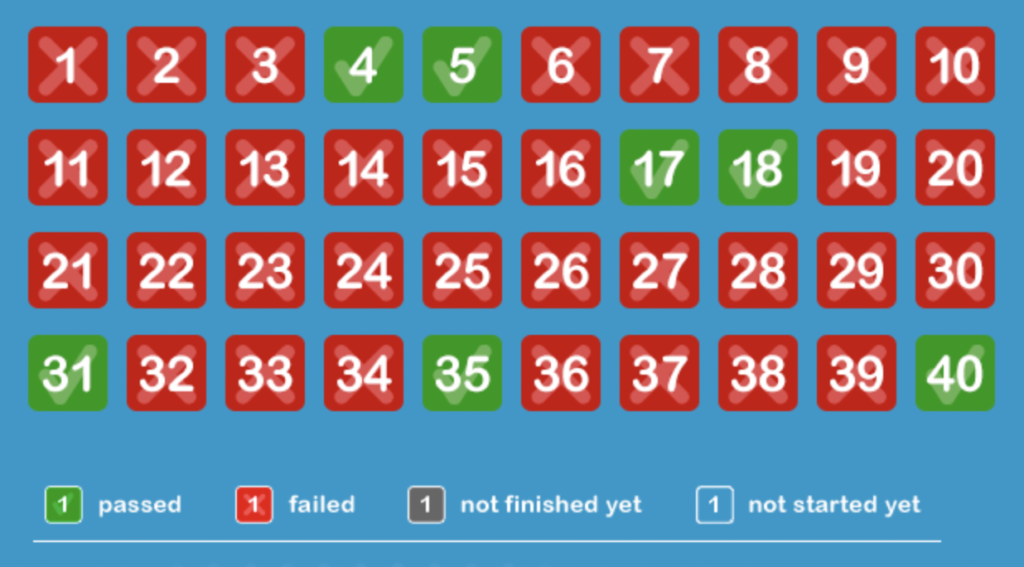
Finally, with only a couple of days to spare before the exam, I turned the corner and started passing the exams. “Ah yes,” I would think to myself as a driving scenario appeared, “my old friend, the yellow trash truck. Don’t brake! Release the accelerator!”
The morning arrived. In a bizarre bad omen, my knee absolutely gave out on me as I got dressed, forcing me to limp into an Uber to get to the testing center. I put all my things in a locker and walked through a metal detector into the testing room, silent as a tomb, where half a dozen others were working on their own exams. I sat down at the touchscreen, said a prayer to Sinterklaas, and tapped Start.
Within ten minutes I was done. I moved robotically through the questions, either having memorized them outright or, thanks to my understanding of the CBR’s odd logic, sorted them out. The touchscreen displayed a big green thumbs-up, and I was out the door, slowly feeling the weight of a thousand “Is a horse a vehicle?” questions drift off of my shoulders. Only when I made it to the bus stop did I realize: my knee didn’t hurt at all. Psychosomatic pain is a real thing, y’all.
As absolutely relieved as I feel, I’m also not done. Next come physical driving lessons, which I’ve been assured will require fewer hours for me than for a new driver. I should damn well hope so, but we’ll see.

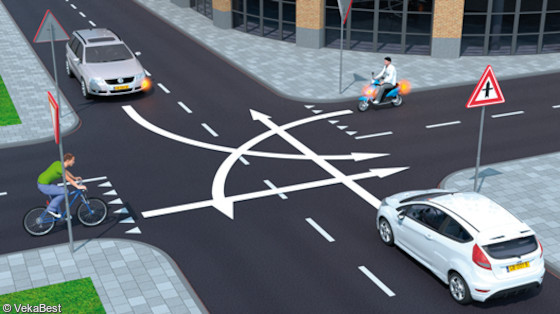



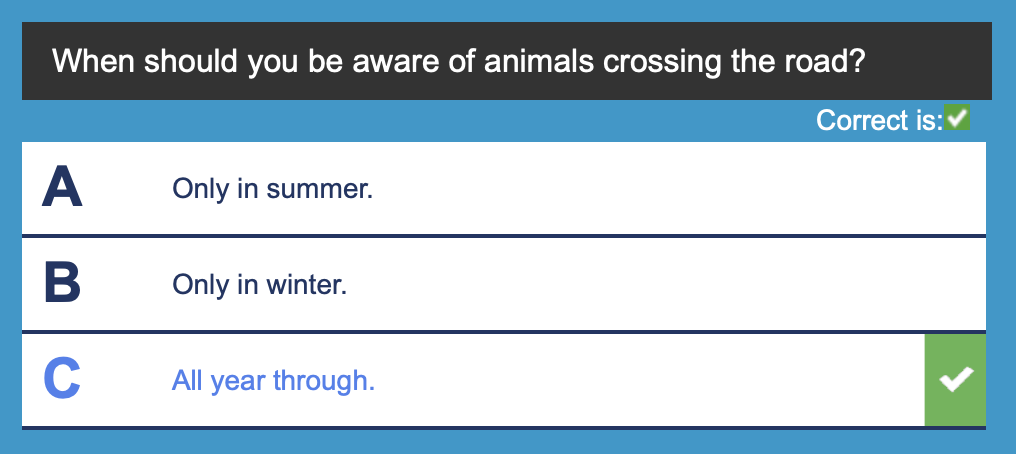
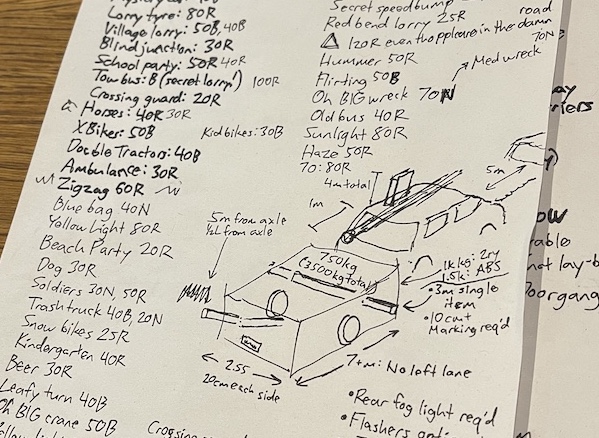
I had to laugh at the “useful” mnemonic POMAN. Is that like a southern US poboy except bigger and fatter?
I’ve read a number of your posts related to your background and your move to Europe, and — from my limited experiences there — you’ve at least selected the “right” transition country for an English-speaker. (Not including England itself — though I found some of the London bartenders as hard to understand as the French ones). Best wishes